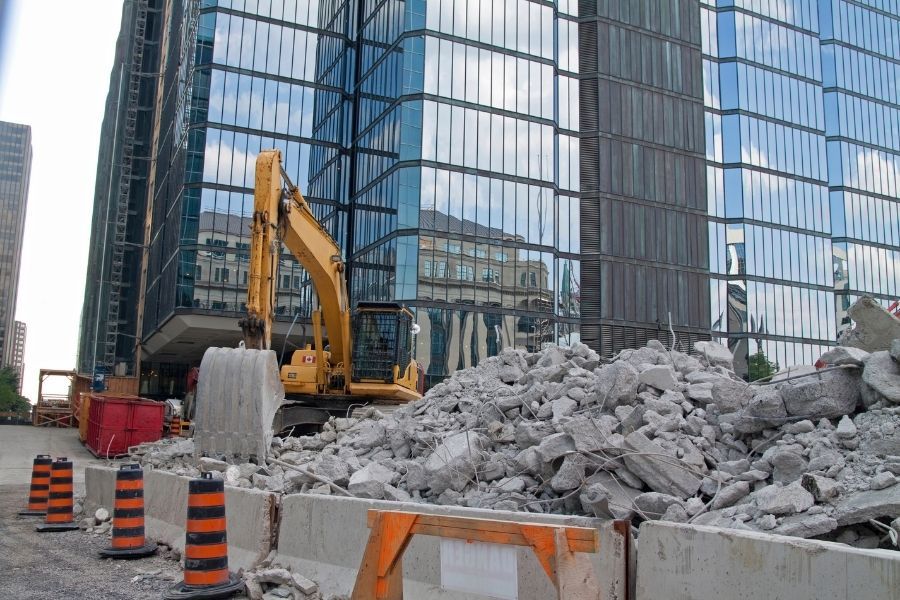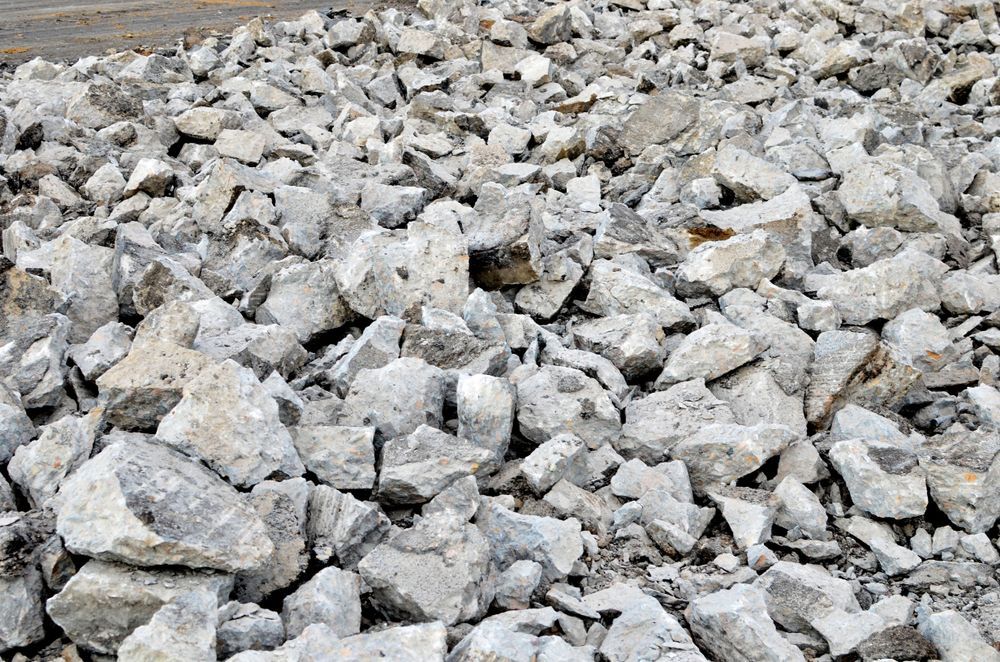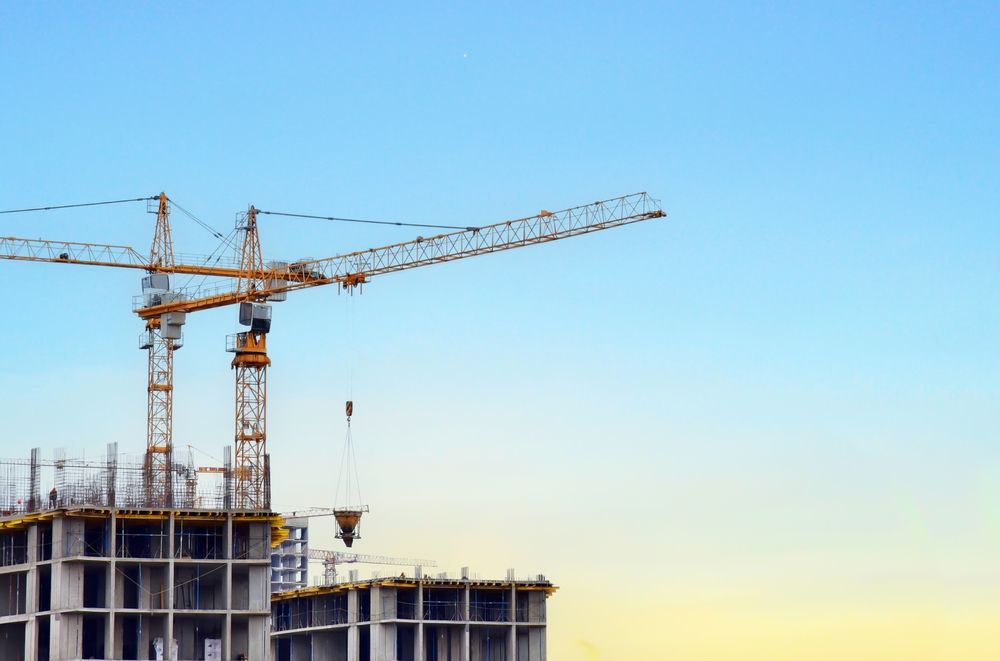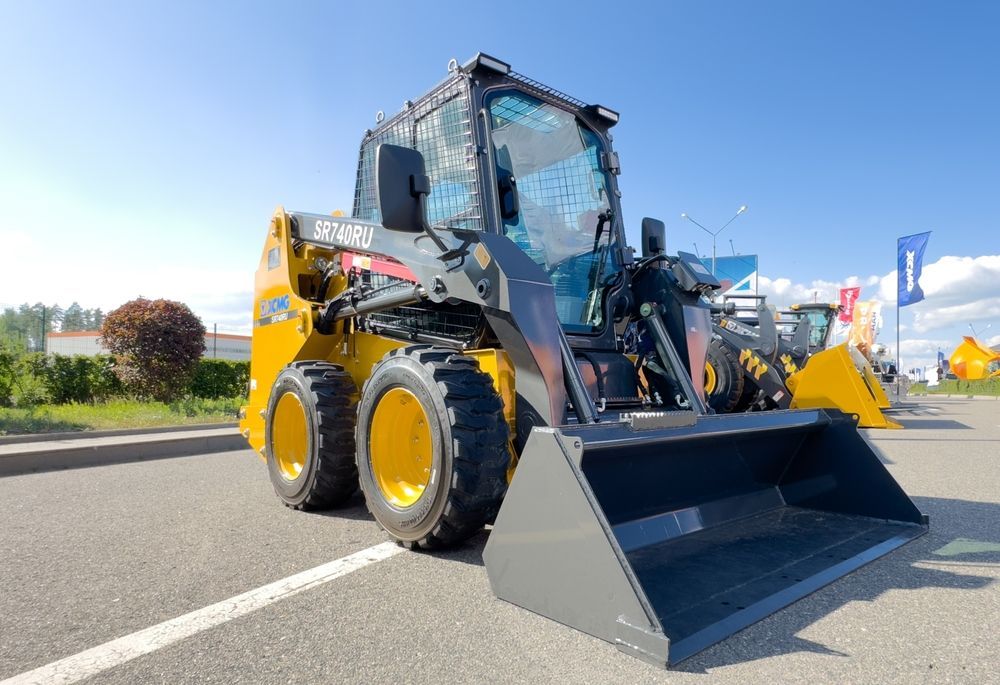What Does a Commercial Demolition Project Involve?
Share this article:

From extensive planning to performing the actual demolition to the required site cleanup and clearing, there’s a lot more involved in demolition than simply knocking down a building. In this post, we’ll dive further into what exactly a demolition project entails.
How Long Does a Commercial Demolition Project Take?
How long does a commercial demolition project take? It depends.
Many people think that a demolition project is nothing more than bringing in a wrecking ball or strategically placing explosives around a vacant property that’s ready to come down. But there’s so much more. There’s the planning stage that comes before a large-scale demolition project. And then there’s the cleanup that comes after it. While it’s true that the demolition itself may be relatively quick (in the case of an implosion, it can happen in seconds), you can’t forget about the planning and cleanup. In this section, we’ll take a closer look at some of the major factors that influence a demolition project’s timeline:
Pre-Demolition
Before you can demolish a building, you have to receive the proper notice of approval. Typically, permits are issued by the local municipality or county office that the demolition is occurring in. Receiving the permit and thereby the go-ahead to demolish a property can vary in time, both based on the size and complexity of the demolition and how busy the local government office is with various permit requests.
For example, while a small demolition project may be approved quickly, a large one may take more time to review and may also consist of an on-site inspection prior to approval. Permitting may take anywhere from a few days to several weeks.
There are other tasks that need to be carried out prior to demolition as well. These include:
- Utility disconnection: If a project were to be demolished with the gas, electrical, and water still running, it could lead to a major problem. Utility disconnection must be performed by professionals and the property may have to be inspected to verify it was performed correctly before the demolition can progress.
- Contents packout: Even if a building is demolished, there’s a good chance that a property owner is going to want to salvage the furniture and much of the other contents inside of it. Even the contents that aren’t going to be salvaged can be donated or recycled. Packing out and selecting items to keep, sell and recycle can take a lot of time, especially if the building contains various artifacts or historical items.
- Asbestos, lead assessment: If buildings contain lead or asbestos-containing materials, they’ll likely need to be removed before demolition can occur. When lead or asbestos in building materials is broken and the dust becomes airborne, it can lead to a very hazardous health situation. Removing items prior to demolition can prevent this, but it will add extra time to the project.
Demolition
After all of the planning and permits have been issued, it’s time for the demolition to take place. This is generally the fastest part of the demolition process. In some instances, where explosives are used, buildings come down in a matter of seconds. In other types of demolitions, a wrecking ball, crane, or a backhoe may be used to take out the building in a more phased manner. There’s also selective demolition. This consists of only part of a structure being demolished and eventually improved. Selective demolition generally takes a bit more time because the process requires more overall precision and may have to be carried out more meticulously. Again, depending on the type of demolition that is carried out, the demolition itself could take anywhere from minutes to several weeks.
Clean Up
After either part of a building or an entire building comes down, it’s time for cleanup to begin. While some building materials are likely able to be salvaged and upcycled to make new materials, clean up is normally the phase of the overall demolition process that takes the most time. Think about it like this: Demolition often occurs so that a new development can take its place. But in order for that new development to start, all of the remnants of the old development need to be cleared from the site. Dumpsters and heavy equipment must be brought in to clear the site, and depending on the size of the building that was demolished, this process could take anywhere from days to weeks.
How Much Does a Demolition Project Cost?
The answer to this question is the same as our answer to the previous question: It depends.
Industry estimates put the
average cost of a commercial demolition anywhere from $4 to $8 per square foot. But this depends on the shape of the building, the cost of permits and licensing (this can vary from city to city, state to state), any asbestos or lead abatement that requires special subcontractors, and other intangibles. Even the price of diesel fuel can influence the cost of transportation-related hauling fees. For an accurate assessment of your demolition project, contact us today.
Why Take on a Demolition Project?
Demolition is commonly done when a building is a danger to either the occupants inside the building or the buildings that surround it. It may also be done if a property has changed ownership and the new owner has a new vision for a development that doesn’t align with the current vision. Sometimes, it just makes more sense to knock a building down and start over than to try to make the necessary improvements to the existing structure.
One thing is for sure: Regardless of the reason behind a demolition job, it’s no easy task – and you need a qualified expert to help. That’s where we come in. For more information and for a consultation on your next demolition project,
contact us today.




